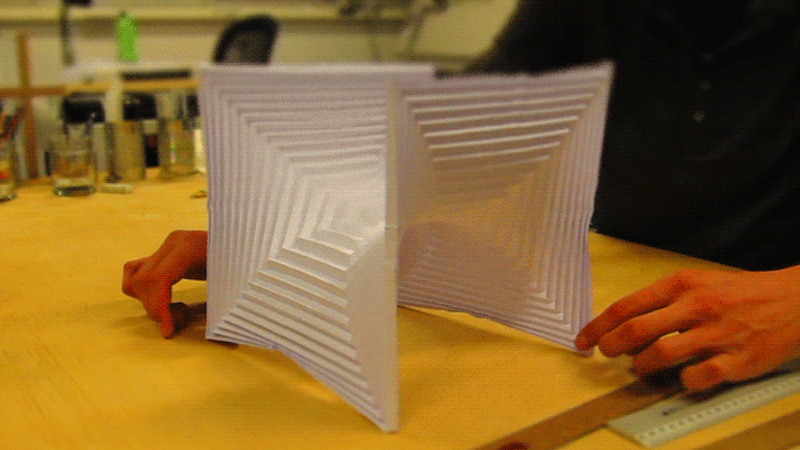
This is a fun geometric study model that I attempted recently and wanted to share the process with you all. The animated GIFs below outline my 5-step process for folding what’s called a “hyperbolic cube.” The cube is a super unique geometry that occurs naturally due to alternating folds along a regular flat octagon. Let’s see how this funky math takes form...
A 24” wide octagonal piece of paper will get you a “cube” measuring approximately 10” x 10” x 10”
Materials you will need :
- 1 piece of paper (approximately 24” x 24” suggested, see Step 1 for details)
- 24” ruler
- Pencil
- Razor knife
- Binder clips (½” suggested)
This geometric recipe takes about 2 hours from the first cut to final fold. Enjoy!
HERE ARE 5 STEPS TO FOLD A “HYPERBOLIC CUBE” :
Step 1 :
Start with a large sheet of paper, measuring approximately 24” x 24”. Make sure to use a good quality and firm paper, any thickness can technically work, but I’d recommend 40 lb thickness for this exercise. (Honestly, you can use standard printer paper. But the final product may have more wrinkles / be a bit less structured.)
Cut your square paper along 8 equal vertices... 135 degrees on the inside.

Step 2 :
This is the tough part. Take your time and be precise here! Follow the octagon sides inwards, drawing concentric lines every half inch all the way to the center. For those of us who are not origami masters… Carefully score every-other concentric line. This helps you fold in the next step...
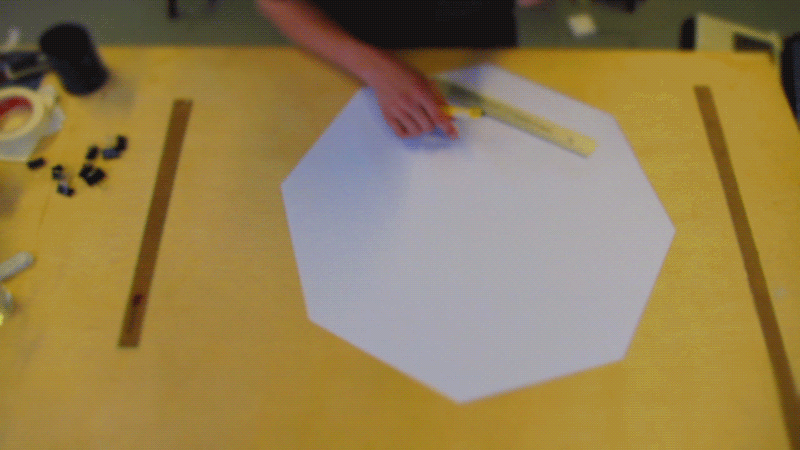
Step 3 :
The folding begins! Alternate mountain and valley folds as you circle around the 8 sides. Use binder clips to hold the corners in place as you move inwards.
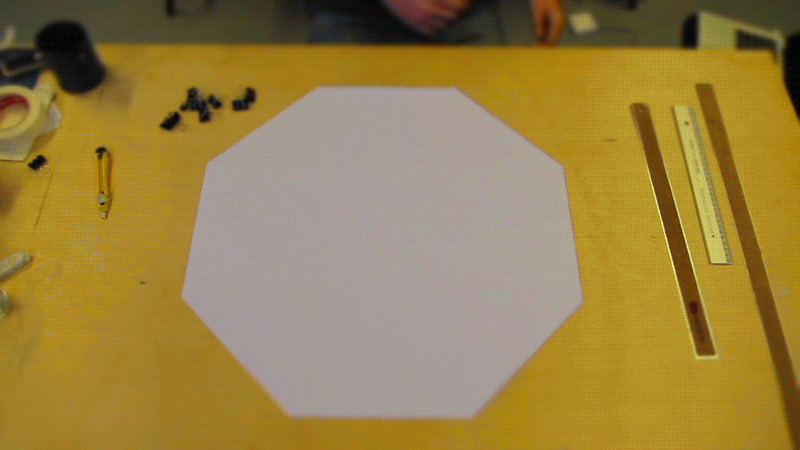
Step 4 :
Once your folds arrive in the center it’s time to remove the binder clips and let the cube free!
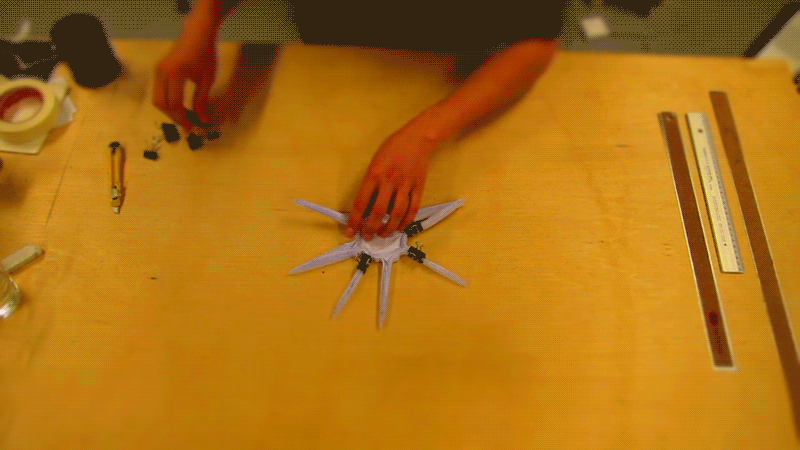
Step 5 :
Play! This funky cube allows for some fun geometric compositions. Flip it, set it upside down, left-side right, inside out. It’s amazing how the memory of the folds bounce back to its natural parabolic form. There’s an inherent strength here that’s fascinating to test and play with. Huzzah science!
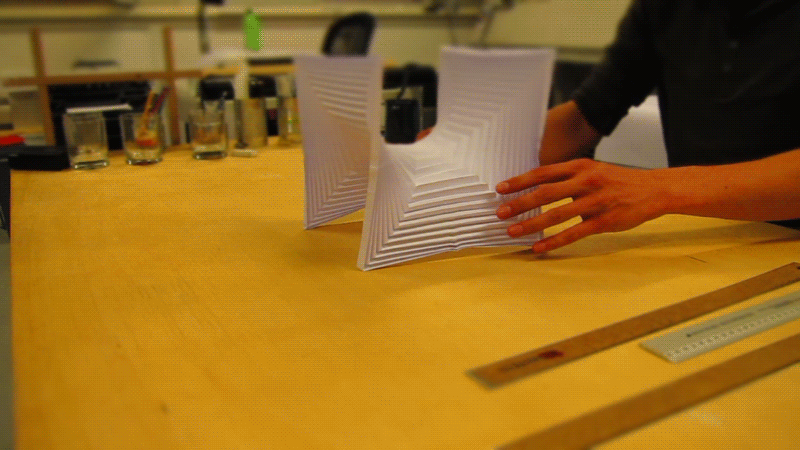
The term “Hyperbolic Cube” was coined by Thomas C. Hull in 2014. The model I created in this steemit tutorial was my interpretation of Hull’s origami study.
Thanks for clicking! Give your folding skills a test and see what shapes you can come up with. Check out my page for more on photography, art and architecture.
Tutorial by LGM-1
Now this is way cool! Great content @lgm-1!
Downvoting a post can decrease pending rewards and make it less visible. Common reasons:
Submit
Many thanks! Glad you dig it.
Downvoting a post can decrease pending rewards and make it less visible. Common reasons:
Submit
No problem! Followed you and I look forward to more of your posts!
Downvoting a post can decrease pending rewards and make it less visible. Common reasons:
Submit
Neat! May have to give this a go later on, that looks like fun to fiddle with - you have a new follower :)
Downvoting a post can decrease pending rewards and make it less visible. Common reasons:
Submit
Awesome, thank you! Give it a go, it's not super tricky... just takes patience!
Downvoting a post can decrease pending rewards and make it less visible. Common reasons:
Submit
I wonder what the acoustics would sound like if someone 3d printed this as a stage. I'm not sure how big 3d printed structures can get, but I know there's a group in China already manufacturing 3d printed high-story buildings. I would like to see/hear Bjork perform inside one of these things.
Downvoting a post can decrease pending rewards and make it less visible. Common reasons:
Submit